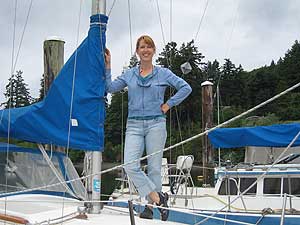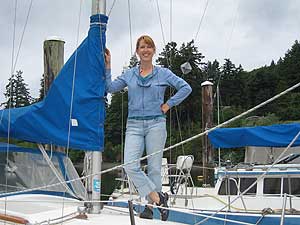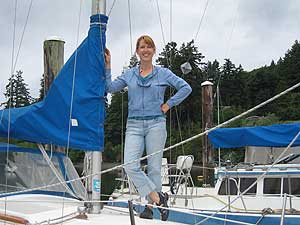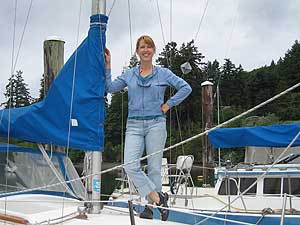Advertisement
Advertisement
Basic Sailing and Seamanship: Making Sense of Sails, Part II
Learning about sail types doesn't have to be daunting. Here are some of the basics.
October 1, 2008
You will be glad to know that in spite of the abundance of sail monikers-mainsail, jib, genoa, spinnaker, staysail, headsail, drifter, blast reacher, screecher, storm sail, trysail, chute and on and on and on -there are really only three main categories of modern sails on a fore and aft-rigged vessel like a sloop: mainsails, headsails and spinnaker or downwind sails. Special use sails are usually just a variation on one of these categories. A trysail, for example, might replace the mainsail in severe weather, to provide steerage and keep the boat from being overpowered.
A sloop's working sails are its mainsail and a headsail (any sail forward of the mast) like a jib that fills most of the foretriangle-the area between the forestay, deck and mast. Together these two sails are the boat's primary source of power. A main can be either fast or slow, depending on its design suitability, fabric and its ability to hold its shape. A common headsail, a Genoa (genny) is a type of jib whose clew reaches aft of the mast. It's designation is by size, a percentage of the foretriangle. The smallest genoa is the lapper at 110 percent ; in other words it is 10 percent greater than the foretriangle. The largest is the drifter at 165 percent Genoa's came into prominence after a win in 1927 regatta in Genoa (thus its name), Italy in which crafty racers added extra sail area that was exempt from any race rule tax. Especially useful in light breezes, a genoa's expansive size and overlapping sails can create tremendous drive by enhancing the slot between the jib and the main. Who said cheaters don't get their reward? A genoa's only only disadvantage is that they can block your view from the helm.
Spinnakers, lightweight, balloon-like, nylon sails, were in response to the immutable law of wind that states on a downwind course your apparent wind decreases as the boat's speed increases. The answer was to add more sail area to compensate for the diminishing wind. The old clipper ships hoisted studdingsails on extended yards. Schooners hoisted gollywobblers. You don't have to a spinnaker (sometimes called a chute for the parachute it resembles). They are generally a racing sail requiring special gear and expert handling. Because of their size, sometimes as large as the main and jib combined, spinnakers are tempermental and making it even more complex is the sails fluctuating terminology depending on the boat's tack.
Hardly worthy of that kind of responsibility, I'm just glad I don't have to worry about moonrakers, skyrakers, skyscrapers, stargazers, Angel's Foot Stools"¦
Advertisement
Advertisement













